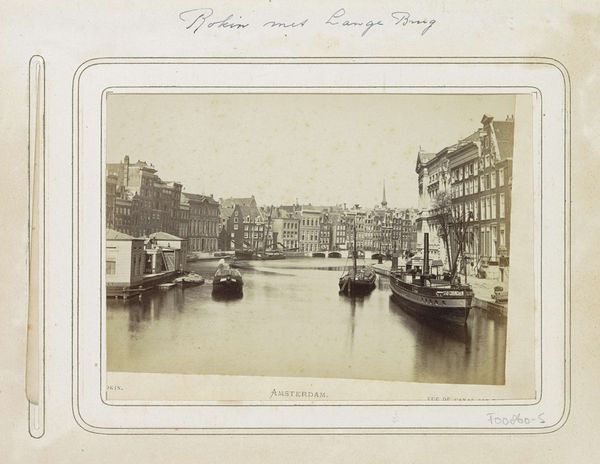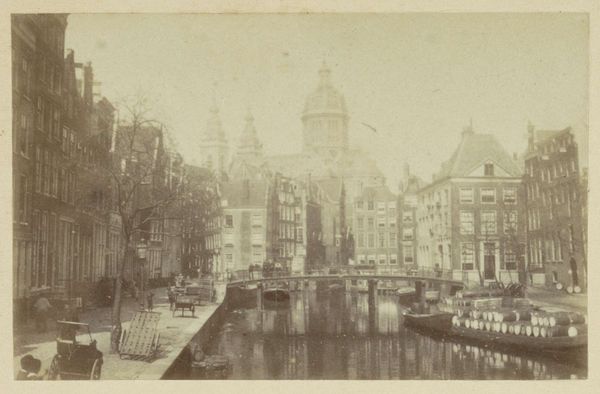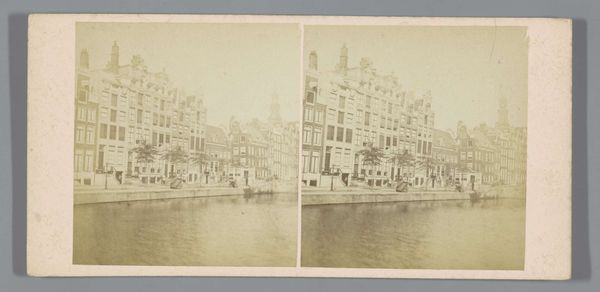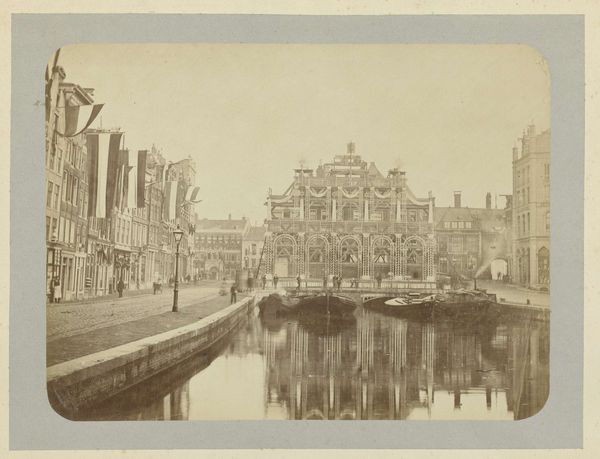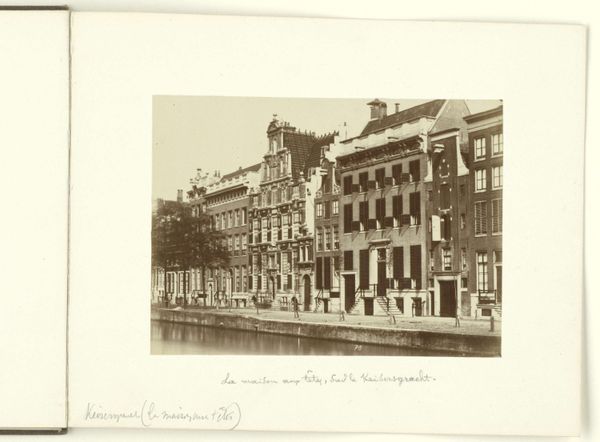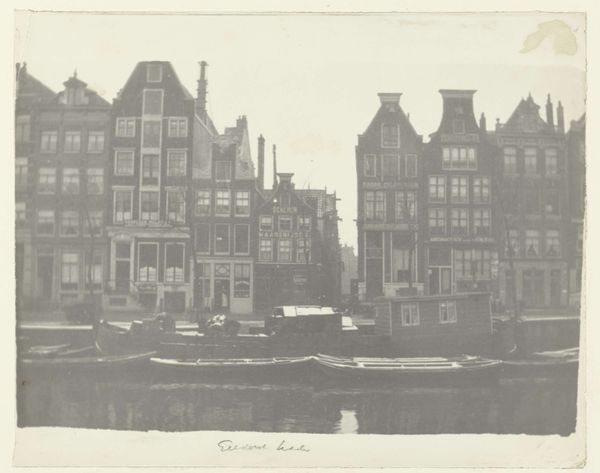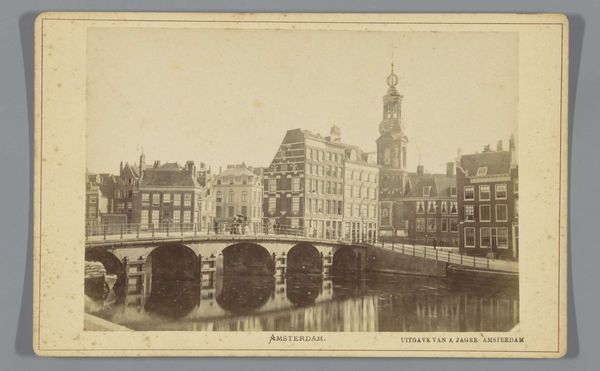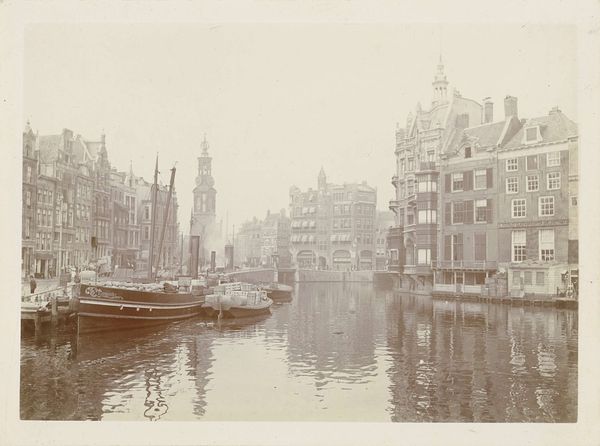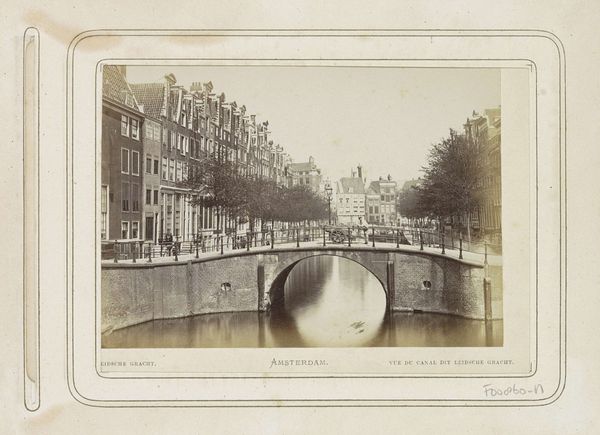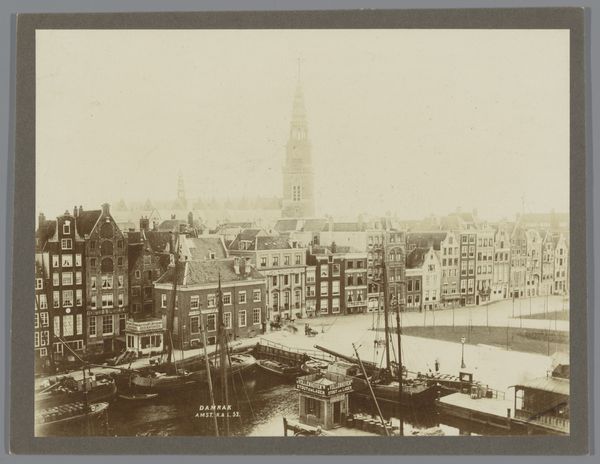
Gezicht op de Munttoren met op de voorgrond dekschuiten op de Amstel after 1877
0:00
0:00
print, photography
#
dutch-golden-age
# print
#
landscape
#
photography
#
cityscape
Dimensions: height 108 mm, width 166 mm
Copyright: Rijks Museum: Open Domain
Editor: So this is "Gezicht op de Munttoren met op de voorgrond dekschuiten op de Amstel," or "View of the Mint Tower with barges on the Amstel in the foreground," made sometime after 1877 by Andreas Theodorus Rooswinkel. It's a photographic print, a cityscape scene. I'm struck by how still and formal it feels, almost staged. What stands out to you, looking at it purely from a compositional perspective? Curator: I'm immediately drawn to the photograph's deliberate structure. Observe the strong horizontal lines formed by the buildings and the water, balanced by the verticality of the Munttoren itself. The artist has created a complex interplay between light and shadow, carefully modelling the architectural forms and adding depth to the water surface. The foreground elements – the boats – act as anchoring devices, guiding the eye towards the more distant focal point. Editor: So, it's less about what's depicted and more about how it's depicted, the shapes and contrasts… Curator: Precisely. Consider also the tonal range – the subtle gradations of gray. This manipulation of light constructs an evocative atmosphere. We might also analyze how Rooswinkel chose his vantage point to emphasize certain geometric relationships within the scene, and whether that suggests any broader visual meaning in his broader body of work. How do you think these compositional choices shape the overall impact of the image? Editor: It definitely forces you to really *look*. I wouldn’t have thought so much about it as a set of carefully arranged forms, rather than just a record of a place. I suppose that kind of rigorous focus really teaches you to see! Curator: Indeed. A close examination of the form allows us to access and consider how a photographer constructs an aesthetic experience and engages us to explore their broader visual system.
Comments
No comments
Be the first to comment and join the conversation on the ultimate creative platform.
